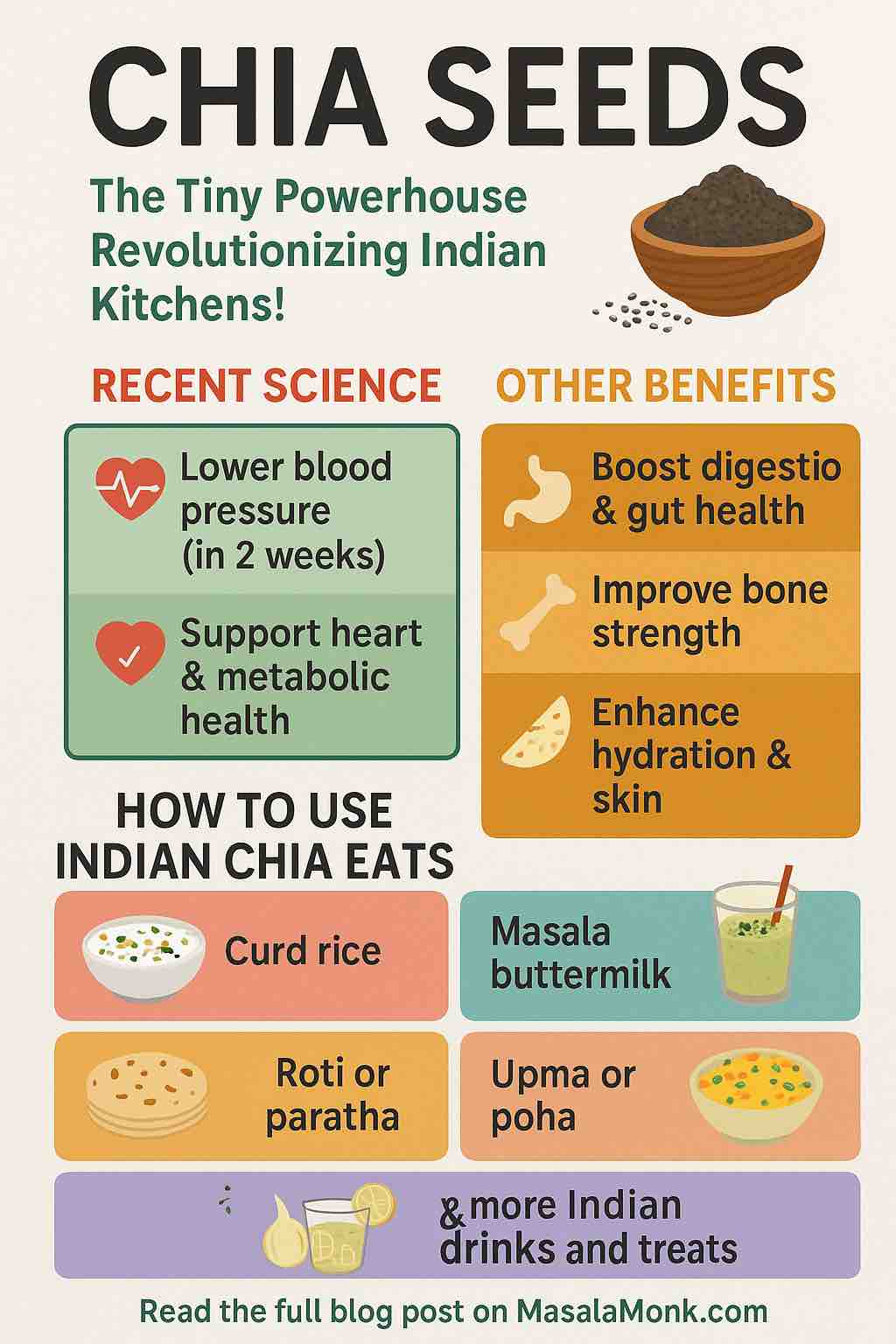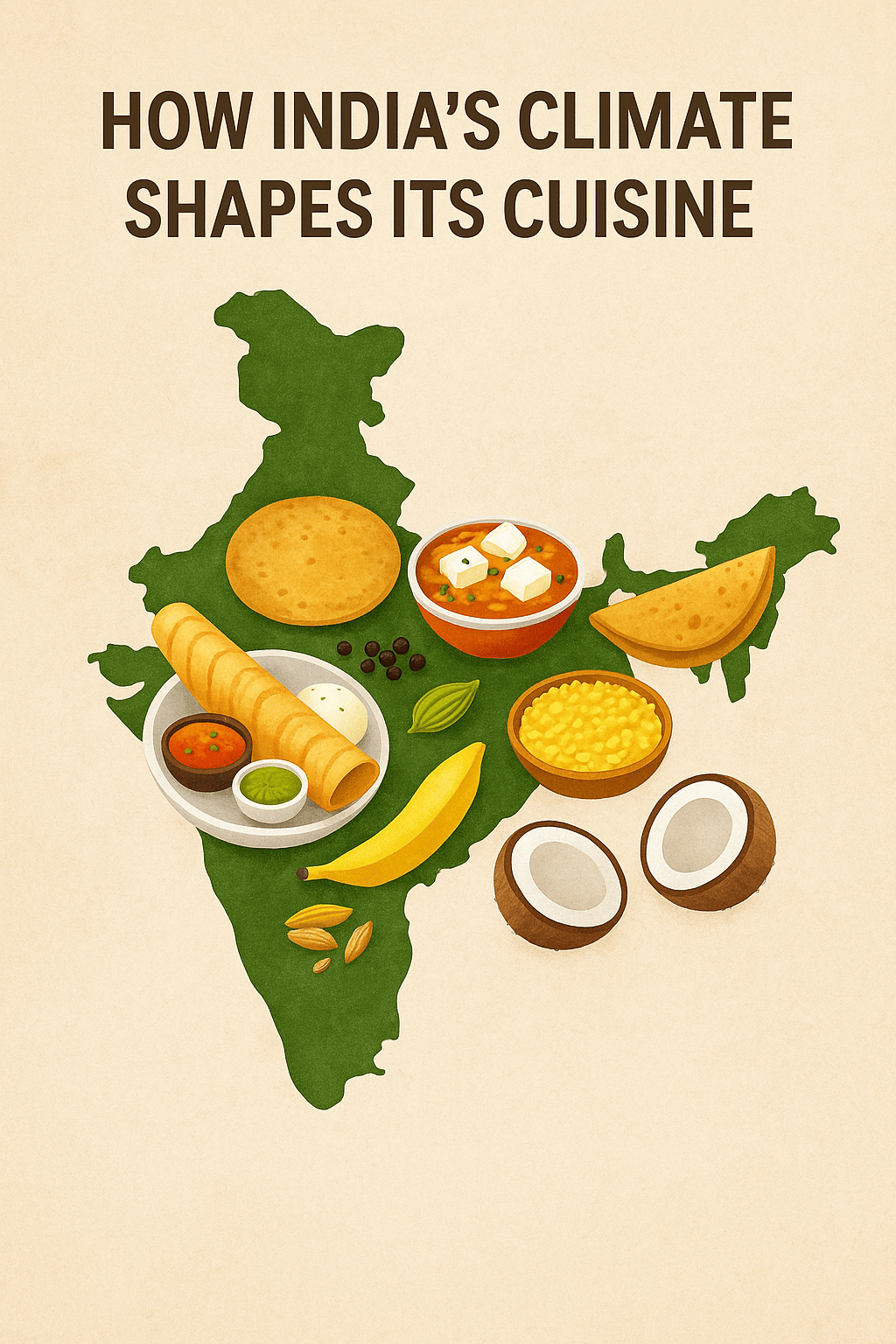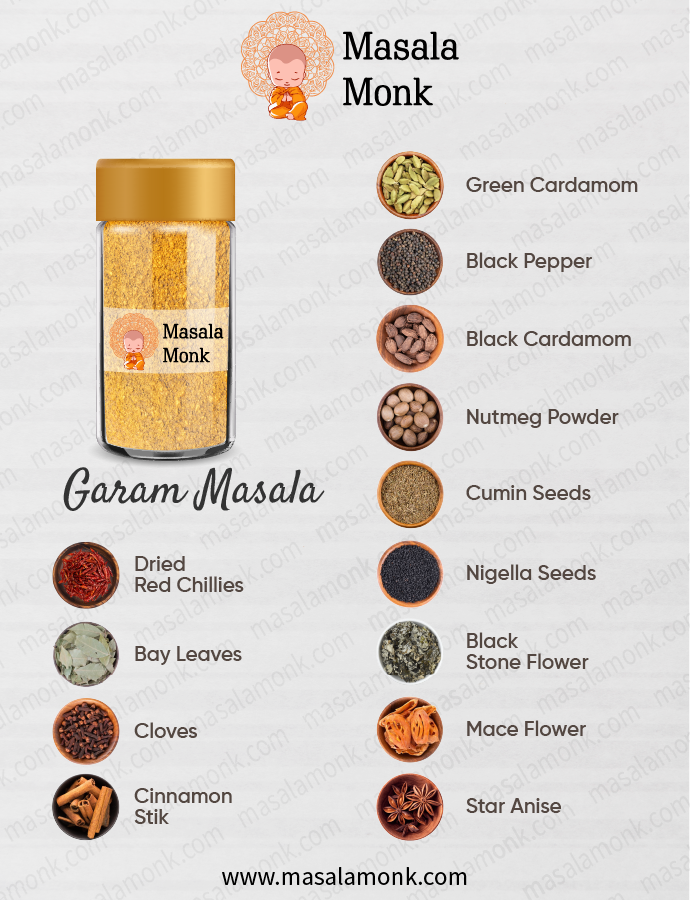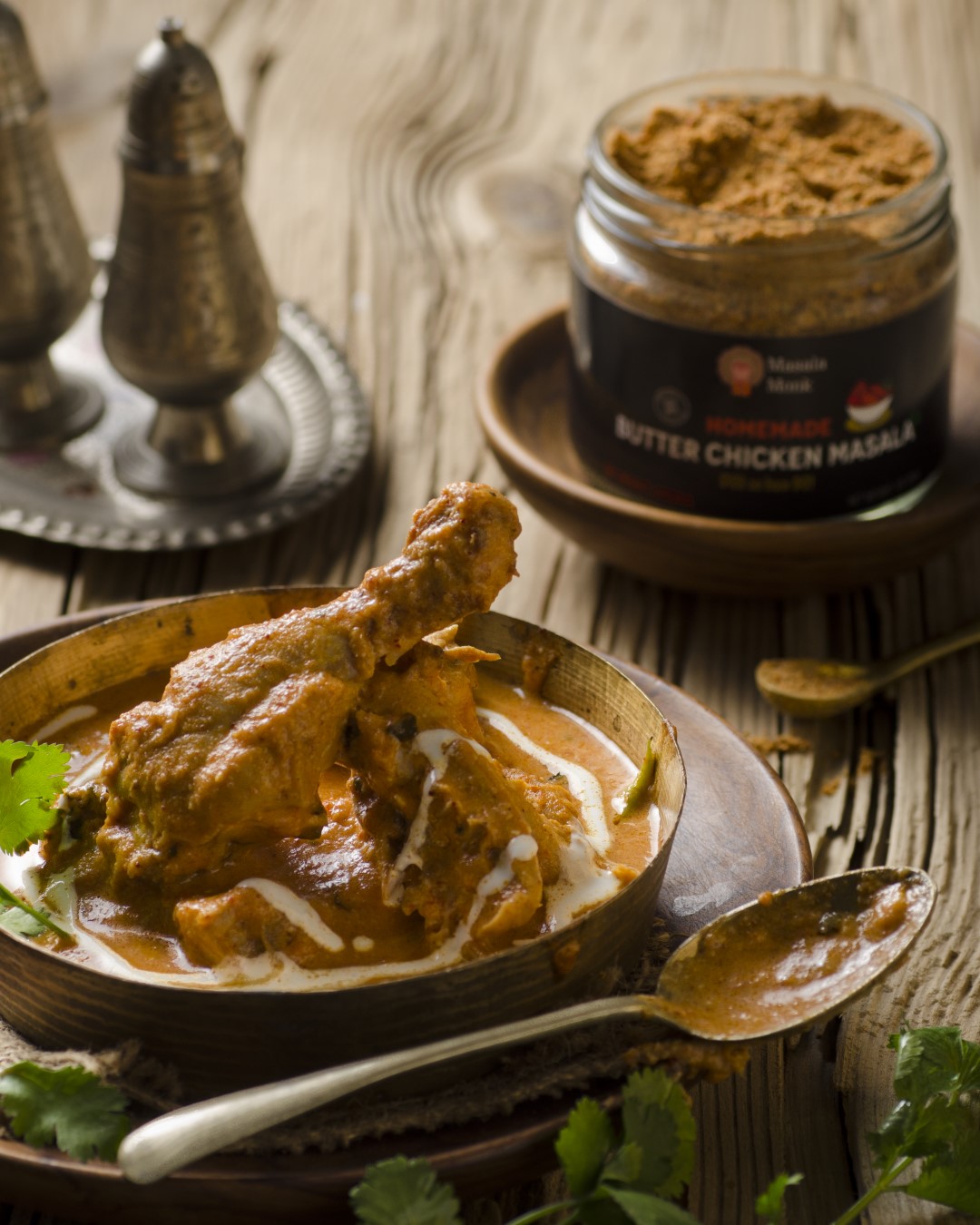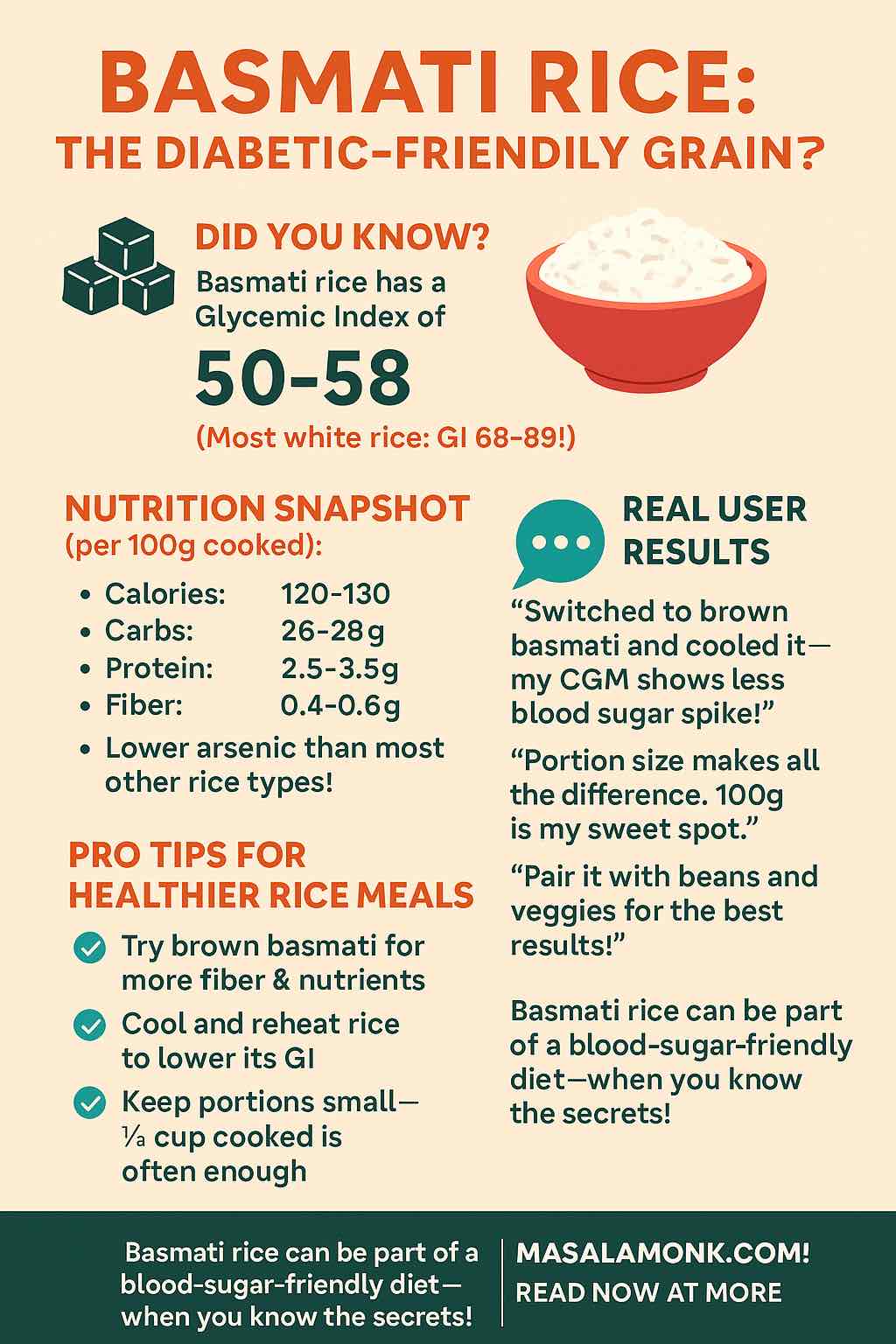
If you love rice but worry about blood sugar spikes, you’re not alone. Rice is a staple for billions, but most varieties have a high glycemic index (GI), sending glucose levels soaring. Enter Basmati rice—a flavorful, aromatic long-grain rice with a reputation for being gentler on blood sugar. But how true is that claim? What do nutrition experts—and real users—actually experience? Let’s dig in.
1. What Makes Basmati Rice Unique?
Basmati rice is known for its:
- Long, slender grains
- Distinct nutty aroma and fluffy texture
- Higher amylose content (a starch that digests more slowly)
- Origins in the Himalayan foothills of India and Pakistan
These features aren’t just for foodies—they also affect how your body digests and absorbs the rice, directly impacting blood sugar.
2. Basmati Rice Nutritional Facts (Latest Data)
Per 100g Cooked (White Basmati)
- Calories: 120–130 kcal
- Carbohydrates: 26–28 g
- Protein: 2.5–3.5 g
- Fat: 0.3–0.5 g
- Fiber: 0.4–0.6 g
- Sodium: 1–5 mg
- Potassium: ~30 mg
- Micronutrients: Small amounts of B vitamins, iron, magnesium, phosphorus, zinc
- Arsenic: Basmati, especially from India/Pakistan/California, contains less arsenic than most rice varieties
Brown Basmati: More fiber (~1.5–2g/100g), more minerals, and slightly more protein than white.
3. Glycemic Index (GI) & Glycemic Load (GL): What the Science Says
Glycemic Index (GI)
- White Basmati Rice: GI 50–58 (low to medium)
- Brown Basmati Rice: GI 45–55 (low)
- Typical White Rice (e.g., Jasmine): GI 68–80 (high)
Glycemic Load (GL)
- White Basmati: GL ~12–15 per 100g serving (moderate)
- Brown Basmati: Slightly lower GL
What Do These Numbers Mean?
- Lower GI and GL = slower, steadier blood sugar rise
- Basmati’s higher amylose content and firmer texture mean it’s digested more slowly than most white rice, leading to smaller glucose spikes.
4. User Experiences: Does Basmati Really Help Control Blood Sugar?
We scoured Reddit, diabetes forums, and health blogs for unfiltered user feedback. Here’s what real people say:
Positive Experiences
- Low-GI basmati reduces glucose spikes:
“I’ve been using low-GI basmati rice since December. It has substantially reduced post-meal sugar spikes that I observed repeatedly using Dexcom G7.” (Reddit/Diabetes) - Brown basmati even better:
“Brown basmati rice causes a smaller spike than regular brown rice. That spike is almost eliminated by refrigerating the rice before heating it.” - Cool rice, better results:
“I started making basmati, cooling it overnight, and reheating. I notice my blood sugar doesn’t rise as much—probably due to the resistant starch.”
Mixed or Cautious Experiences
- Serving size is everything:
“Portion size matters a LOT. 100g cooked rice is fine, but if I double that, my glucose still jumps.” - Not spike-free for everyone:
“Even with basmati, my sugar can hit 150, but my doctor says that’s okay. Brown basmati helps more.” - Meal composition matters:
“Rice alone spikes me. Pair it with beans or eggs and veggies, and I barely notice a rise.”
Takeaways from Users
| Tip | Why It Works? |
|---|---|
| Refrigerate before serving | Increases resistant starch, lowers GI |
| Small portions | Less carbs = less glucose spike |
| Mix with protein/fiber | Slows absorption, gentler response |
| Try low-GI brands | Labeled “diabetic friendly” basmati |
5. Practical Strategies: Cooking, Serving, and Pairing for Lower GI
Choose the Right Rice
- Look for certified low-GI basmati (brands like Laxmi, Daawat, Crown Diet)
- Brown basmati has more fiber, nutrients, and lower GI
Cook Smart
- Do not overcook (keep grains firm for higher amylose)
- Soak rice for 20–30 minutes before cooking—may slightly reduce arsenic
- Cool and reheat: Cook rice, cool in the fridge for 8+ hours, then reheat—boosts resistant starch, which your body digests more slowly
Portion Control
- Start with ½ cup cooked (about 100g)—see how your body responds before increasing
Pair Wisely
- Always serve rice with lean protein (chicken, fish, tofu) and non-starchy veggies
- Add a healthy fat (olive oil, nuts, seeds) to further slow glucose absorption
Track Your Response
- If you use a CGM (continuous glucose monitor), test different methods and meal combos
- If not, consider finger-prick testing 1 and 2 hours after meals
6. FAQs and Real-World Takeaways
1. Is basmati rice better than regular white rice for blood sugar control?
Answer:
Yes. Basmati rice has a lower glycemic index (GI) than most other white rice types, which means it causes a slower, smaller increase in blood sugar. This makes it a preferable option for people watching their glucose, including those with diabetes or insulin resistance.
2. How much basmati rice can I eat if I have diabetes?
Answer:
Portion control is key. Most dietitians recommend starting with about ½ cup cooked (100g) per meal, combined with lean protein and vegetables. Always monitor your blood sugar to see how your body reacts.
3. Is brown basmati rice healthier than white basmati?
Answer:
Yes. Brown basmati contains more fiber, vitamins, and minerals. It has a slightly lower GI and helps you feel fuller longer. However, white basmati is still a better choice than most white rices.
4. Does cooling and reheating basmati rice really lower its GI?
Answer:
Yes, somewhat. Cooling cooked rice and then reheating it increases its resistant starch, which can slightly lower its GI and reduce the blood sugar spike after eating.
5. Are there any special “low-GI” basmati rice brands?
Answer:
Yes. Brands like Laxmi “Diabetic Friendly,” Daawat, and Crown Diet market their rice as low-GI. Some users and clinical studies have confirmed these products lead to milder blood sugar responses, but it’s still important to monitor your own results.
6. Can I eat basmati rice every day?
Answer:
You can, but balance is important. Rotate with other whole grains and always pair rice with protein and non-starchy vegetables for best nutrition and blood sugar control.
7. What is the glycemic index of basmati rice compared to jasmine or sushi rice?
Answer:
White basmati rice: GI 50–58 (low-medium);
Jasmine rice: GI 68–80 (high);
Sushi/short-grain rice: GI 70–89 (high).
Basmati is clearly the better choice for a lower glycemic impact.
8. Does the way I cook basmati rice affect its GI?
Answer:
Yes. Firmer, less sticky rice (not overcooked) has a lower GI. Soaking, rinsing, and using minimal water helps. Avoid cooking it to mush, which can raise the GI.
9. Can I use basmati rice in meal prep or batch cooking?
Answer:
Absolutely! In fact, cooked basmati that is cooled and reheated as part of meal prep may have even lower GI. Store cooked rice in the fridge and reheat thoroughly before eating.
10. Are there risks to eating basmati rice, like arsenic content?
Answer:
Basmati rice from India, Pakistan, and California generally contains less arsenic than other rice types. Rinsing thoroughly and cooking in excess water (and draining) can reduce arsenic further. If you eat rice daily, variety and proper prep are key.
7. Conclusion: Is Basmati Rice Right for You?
Basmati rice isn’t magic, but it’s one of the best choices for rice lovers seeking blood sugar control—thanks to its unique starch structure and lower GI. Combine it with smart cooking, sensible portions, and balanced meals for the best results.
Remember:
- Your body is unique. What works for one person might not work for you—test, adjust, and find your own balance.
- Enjoy rice as part of a varied, whole-foods diet—not as the main event.
Practical Sample Meal
Simple, Blood-Sugar Friendly Basmati Plate:
- ½ cup cooked brown basmati (cooled and reheated)
- Grilled chicken or baked tofu
- Steamed broccoli & bell peppers
- Drizzle of olive oil or sprinkle of almonds
Want More?
Have a question about basmati, want detailed comparisons, or need help building a personalized meal plan? Drop your questions below or reach out—let’s make rice work for you, not against you!
Love this guide? Share it with a friend or bookmark for future reference!

